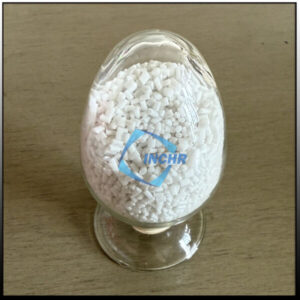Master Your Film Quality: 5 Essential Tips for Using Slip Antiblock Masterbatch Effectively
Struggling with plastic films that stick together, jam machines, or lack that perfect smooth finish? Slip antiblock masterbatch is your go-to solution, but simply adding it isn’t enough. To truly harness its power for superior film performance and production efficiency, you need to use it effectively. Here are 5 crucial tips:

1. Prioritize Perfect Dispersion: The Foundation of Performance
Why it Matters: Poor dispersion leads to “fish eyes” (undispersed particles) or uneven distribution of the slip and antiblock additives. This causes inconsistent surface properties – some areas might still stick, while others have too much slip, leading to printing or lamination issues.
The Tip: Ensure your masterbatch is thoroughly mixed with the base polymer before it enters the extruder. Use high-intensity mixers designed for masterbatch incorporation. Crucially, optimize your extrusion screw design and processing parameters (especially temperature profile in the initial zones) to ensure the masterbatch carrier melts and disperses homogeneously within the main polymer melt.
Benefit: Consistent film surface, predictable coefficient of friction (COF), reliable antiblocking performance, and elimination of defects.
2. Dial in the Dosage: More Isn’t Always Better
Why it Matters: Overdosing slip antiblock masterbatch is a common pitfall.
The Tip: Start with the masterbatch supplier’s recommended dosage as a baseline. This is typically between 1% and 5%, but varies greatly based on the base resin, film thickness, application, and desired COF/blocking level.Fine-tune the dosage incrementally based on actual performance data, not guesswork.
Benefit: Achieves target performance (slip & antiblock) without sacrificing optical properties, printability, sealability, or causing handling issues. Optimizes cost.
3. Respect Material Compatibility: Avoid Costly Surprises
Why it Matters: Not all slip and antiblock additives work equally well with every polymer. Some additives can migrate excessively, cause plate-out on processing equipment, or even negatively impact the thermal stability or mechanical properties of your film.
The Tip: Always consult your masterbatch supplier about compatibility with your specific base resin (e.g., LDPE, LLDPE, HDPE, PP, BOPP) and any other additives in your formulation (like pigments or other functional masterbatches). Be particularly cautious when switching resin suppliers, as minor additive packages in the base resin can sometimes interact unexpectedly. Verify compatibility through testing if introducing new combinations.
Benefit: Prevents processing headaches (plate-out, screen clogging), ensures stable film properties over time, and avoids degradation or unexpected interactions.
4. Mind the Temperature: Protect Your Additives
Why it Matters: Slip agents, especially erucamide or oleamide, have specific thermal stability ranges. Excessive processing temperatures can cause them to degrade, volatilize (smoke!), or oxidize, drastically reducing their effectiveness. High temperatures can also affect the performance of certain antiblock agents.
The Tip: Strictly adhere to the recommended processing temperature range provided by your anti-block masterbatch supplier. Pay close attention to melt temperatures in the extruder and die, as well as temperatures in downstream equipment like calendars or ovens. Optimize cooling rates after extrusion to lock the additives near the film surface where they function best.
Benefit: Maximizes the efficiency and longevity of the slip and antiblock additives, minimizes smoke/odors, ensures consistent performance batch-to-batch.
5. Store Smartly: Preserve Your Investment
Why it Matters: Masterbatches, especially those containing organic additives like slip agents, can absorb moisture or be affected by heat, light, and oxygen during storage. This can lead to clumping, additive degradation, or premature blooming, impacting performance and causing processing issues.
The Tip: Store slip antiblock masterbatch in a cool, dry place away from direct sunlight and heat sources. Follow the supplier’s recommended shelf life and practice “first-in, first-out” (FIFO) inventory management.
Unlock Peak Film Performance
Using slip antiblock masterbatch effectively isn’t rocket science, but it demands attention to these key details – dispersion, dosage, compatibility, temperature, and storage. By mastering these tips, you’ll produce films with consistently low COF, excellent antiblocking properties, and high quality, all while optimizing your production efficiency and costs.
Ready to optimize your film production? Explore our range of high-performance anti-block masterbatch solutions tailored for your specific resin and application needs.
Anti Block Masterbatch: Solving Common Challenges In Plastic Film Manufacturing




